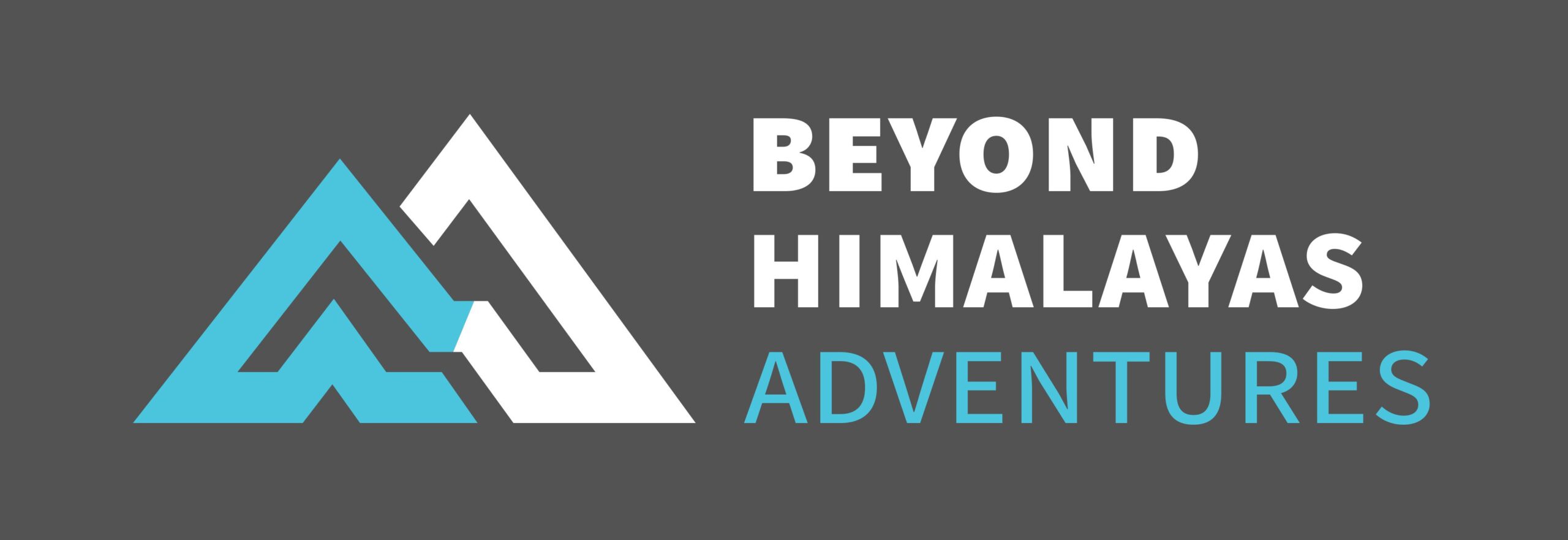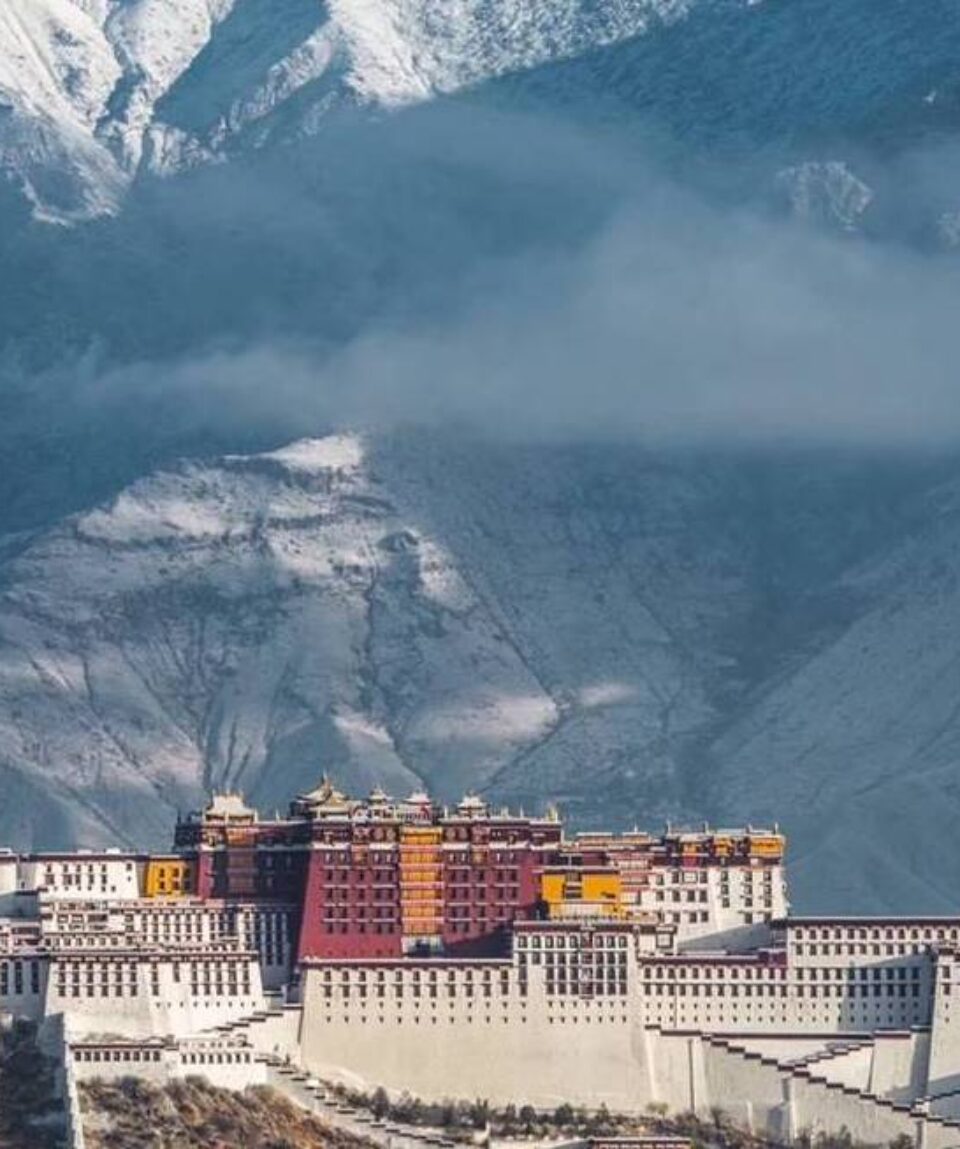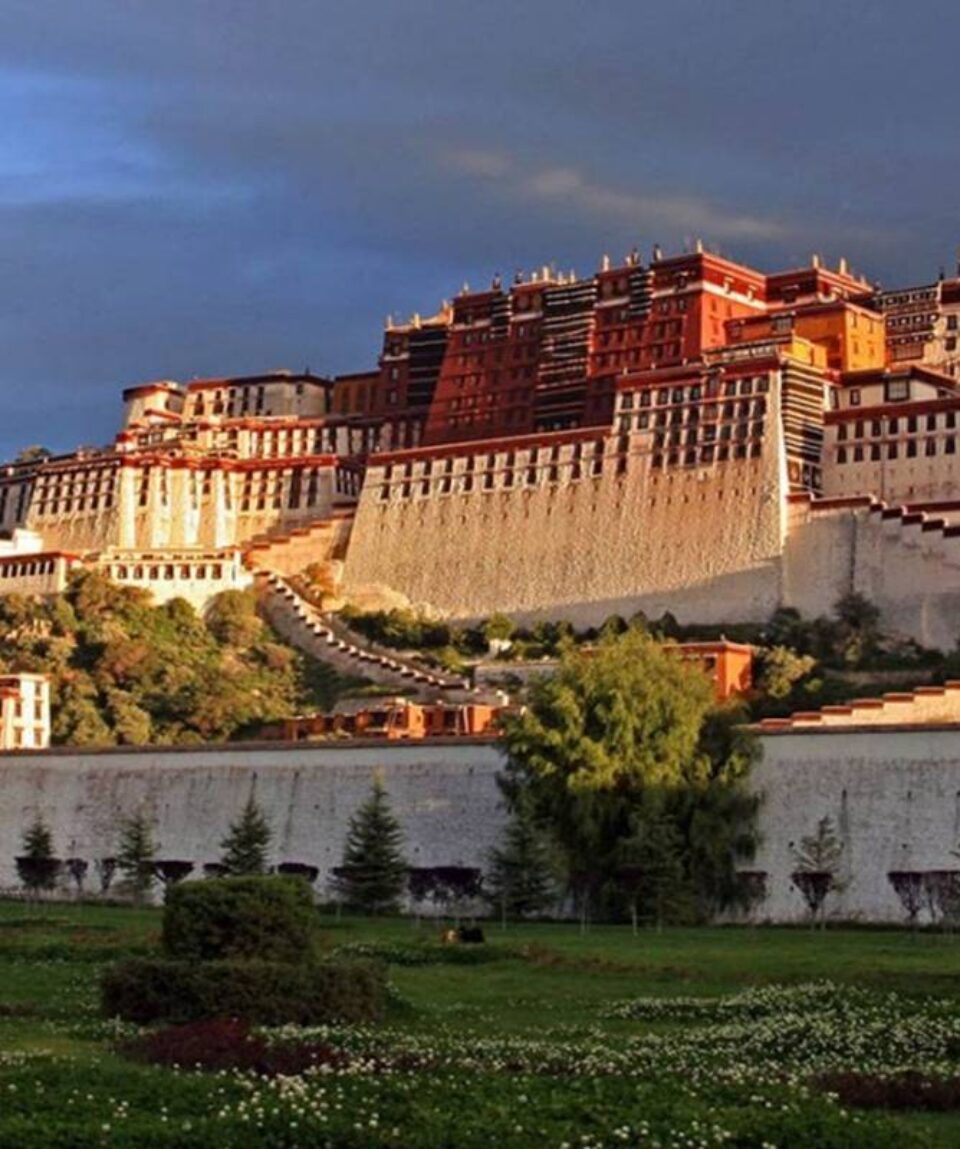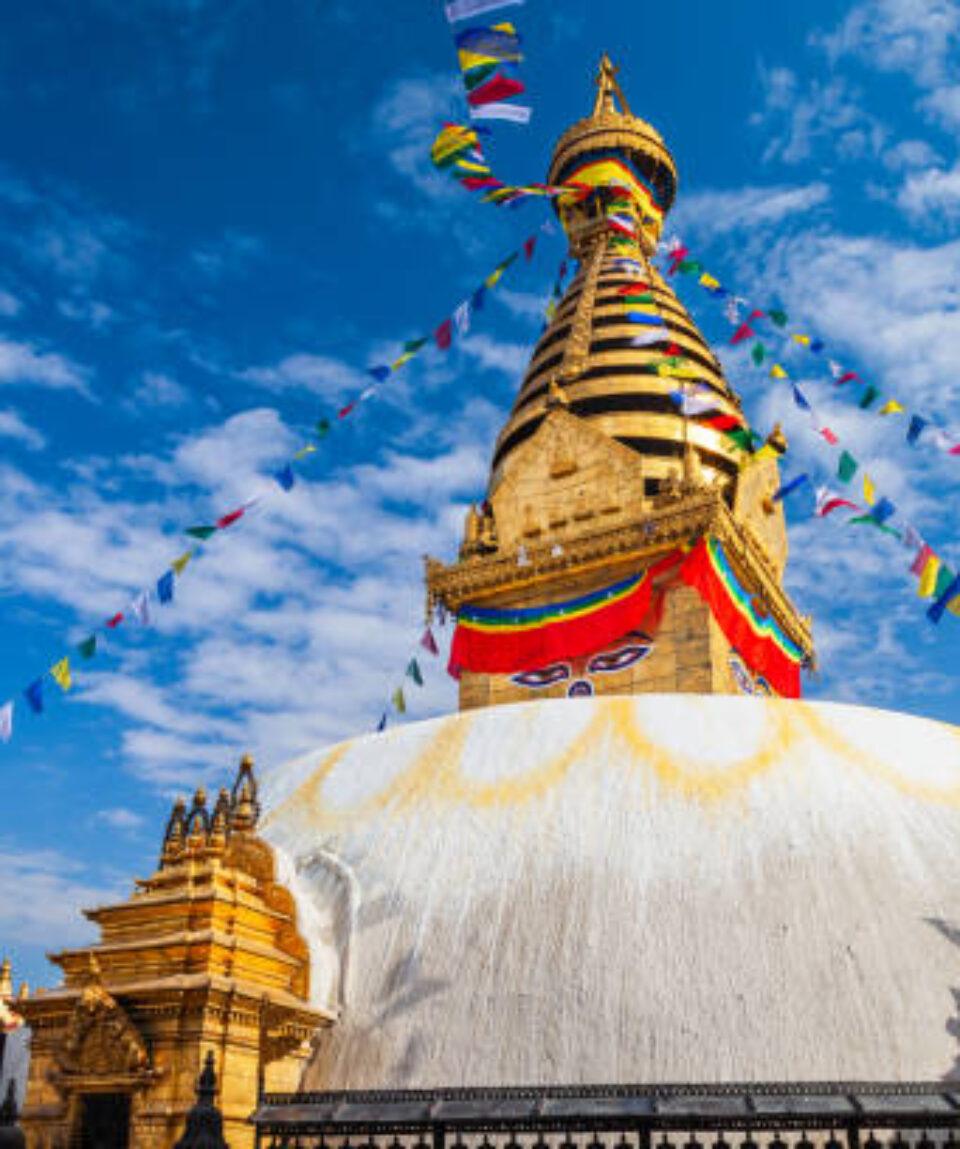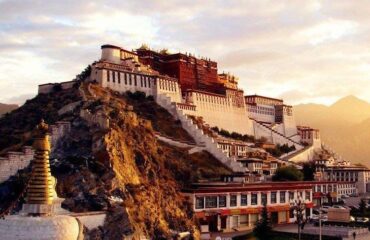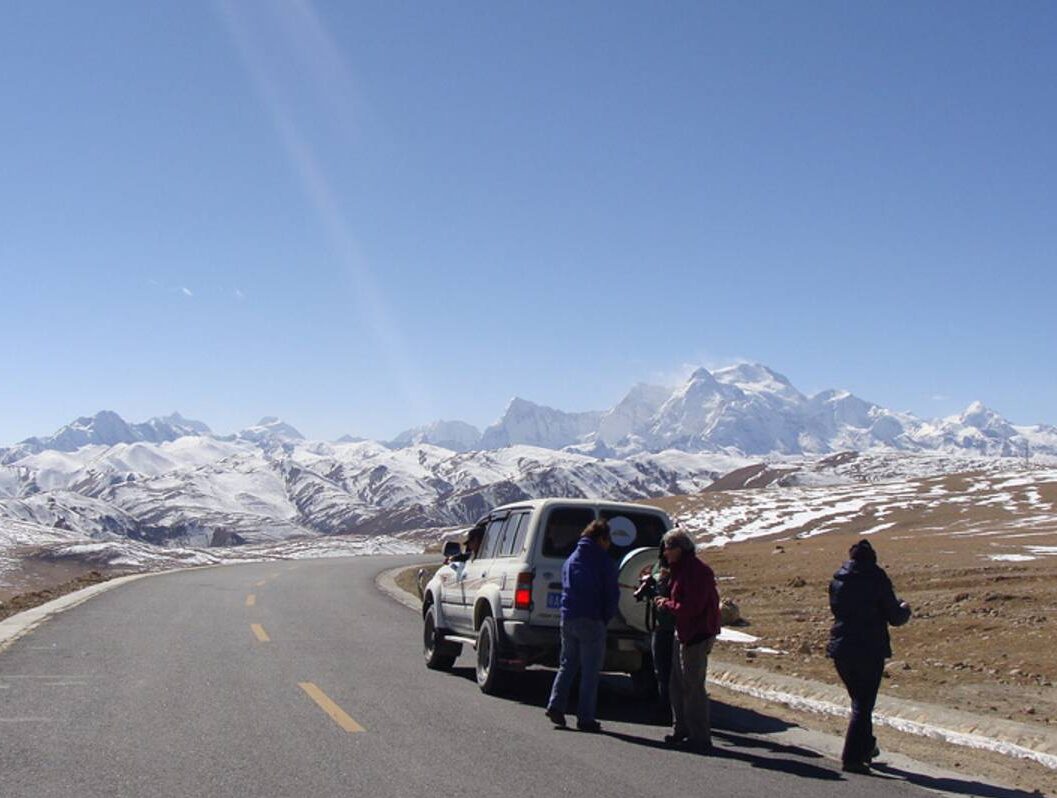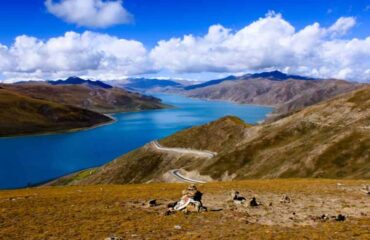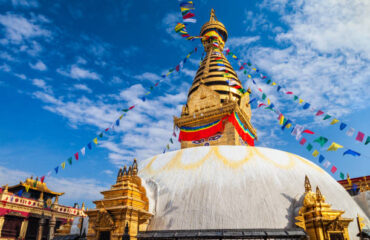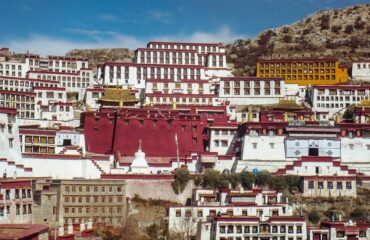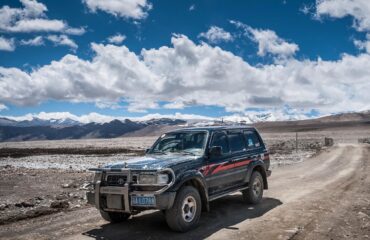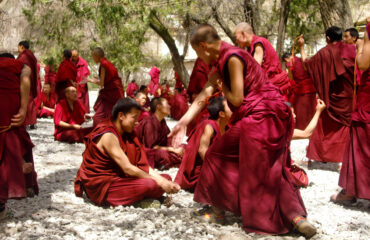Kathmandu to Lhasa Overland Tour
fromExperience an epic trans-Himalayan in our thrilling Lhasa to Kathmandu tours and discover the exotic lives of local Tibetans and explore premium Buddhist sites from Lhasa.
-
Reviews 0 Reviews0/5
-
Vacation Style Holiday Type
-
World
-
-
Activity Level Leisurely
-
Group Size Medium Group
Taking this classic trip to visit Everest Base Camp from Lhasa and Kathmandu you will not only witness the world’s highest mountain from the base camp at 5200 meters above sea level but also visit the most essential parts of Lhasa and Shigatse, the most important cities in Tibet. You will be embraced by the beauty of Yamdrok Lake, respect to those sacred pilgrims, and be amazed by the unique culture of Tibet.
The adventurous Lhasa to Kathmandu Overland Tour via Everest Base Camp (EBC) is the most remarkable road trip in Tibet. This roadside journey will take you through some of the best countrysides on the Tibetan plateau. Also, this comprehensive tour includes all the major cultural and historical attractions of Tibet.
Driving along Friendship Highway from Kathmandu westwards to Tibet, you will ultimately arrive at Lhasa via Tingri, Shigatse, and Tingri. On the way, tourists will have two days to visit Mount Everest of northern Himalayas and to Take a closer look at Everest Base Camp. The wonderful tour cover snow-capped mountains, huge glaciers, sacred lakes and other natural landscapes, and several famous monasteries and palaces in Tibet.
- Airport transfers and escorts in Nepal and Tibet.
- All meals during the tour. (breakfast, lunch, dinner, tea, and coffee)
- Accommodation while on the tour
- Domestic airfares and transportation as itinerary
- English speaking government-licensed guides
- Entry permits and fees for all temples, parks, monasteries, and cultural and historical sites.
- Tibet visa fees and processing assistance (Please e-mail us your color scan copy of passport)
- Staff cost including their (wages, insurance, food, and accommodation)
- 4 nights accommodation at 3-star category hotel in Kathmandu on twin sharing basis with breakfast.
- Aaccommodation in Lhasa with breakfast on twin sharing basis
- All guided sightseeing tours in Nepal, Tibet, and entry fees.
- All ground transportation on comfortable private vehicle
- All government and local taxes
- International airfares
- International Airport Departure Tax and visa entry fees
- Personal Equipment
- Any type of personal expenses, such as alcoholic beverages and drinks, phone, and laundry.
- Rescue & travel insurance, trip cancellation costs, accident or health emergency, evacuation, loss, theft or damage to baggage, and personal effects.
- Tips & Gratuities to local staffs
- We strongly advise you to take out personal travel insurance.
- Day 1 Depart Home Country
- Day 2 En Route (Transit)
- Day 3 Arrive in Kathmandu
- Day 4 Kathmandu Sightseeing and Trip Preparation
- Day 5 Kathmandu to Syabrubesi 137km
- Day 6 Syabrubesi to Kyirong (2800m) 4-5hrs -40km
- Day 7 Kyirong to EBC to Tingri (480km, 11 hrs)
- Day 8 Tingri to Shigatse (280km, 7 hrs)
- Day 9 Shigatse to Lhasa via Gyantse (375km)
- Day 10 Tour in Lhasa city
- Day11 Tour in Lhasa city
- Day12 Depart from Lhasa to Kathmandu
- Day13 Final Departure
- Day 14 En Route to Home Country
- Day15 Arrive Home Country
All you need to bring for this Tour is simply some comfortable clothes; there is no any requirement of special equipment on the tour. However for your ease, the following gives you the general idea about the personal items you need to manage for the trip. The personal items referred here are optional and depends upon your choice. The most important factor to be considered while choosing the equipments and your Bag-pack, is the time of the year you are travelling.
In a tour, the vehicle transfers all the heavy items and equipments. But the Personal belongings of the clients which is required at any moment like money, water bottle, camera, suns cream and toilet paper etc. should be carried by yourself. It is therefore advisable that you pack your personal belongings into your daypack.
A Note on Packing
For your international flights, we recommend that you pack all your equipment in your two duffle bags or suitcase. Do not simply pack your backpack (since the straps can be damaged by the baggage handling machines). It is important to lock these bags for their trip. Depending on the airport, you may be able to put your travel locks on after TSA has searched the bags. If not, Lock the bags with Zip Ties. If the TSA cuts off the zip-tie to search your bag, they will replace it. You will still need the travel locks to lock your bags in the hotel and during the tour .
- Duffel or Rucksack bag or suitcase
- Small day pack
- Warm wool or synthetic hat that cover your ears (only if you are traveling in the cold season i.e January, February and December)
- Goggles or sunglasses for sunbeam, dust and wind.
- A neck warmer is another piece of gear for extra warmth if you feel you will need it and is for cold season i.e January, February and December.(optional)
- 1 pair of warm gloves (This is required if you are traveling in cold season i.e January, February, and December).
- T-shirts (2).
- Waterproof (preferably breathable fabric) shell jacket (preferable if you are travelling in rainy season from June to September.)
- 1 pair cotton pants (loose jeans/khakis), 1 pair shorts.
- 2 pairs lightweight long underwear/thermals (if you are traveling in winter January, February and December).
- 2 pairs of liner socks, synthetic or capilene.
- 1 pair light camping shoes or sneakers..
- 1 pair of sandals (Optional).
Medicines and First Aid Kits
- Extra Strength Excedrin for altitude-related headaches.
- Ibuprofen for general aches and pains.
- Immodium or Pepto Bismol capsules for upset stomach or diarrhea.
- 1 small personal sized first-aid kit with blister treatments such as mole skin, band-aids, some waterproof tape, anti-infection ointments, etc. Your guides will have more extensive medical gear, but you should have the basics for general use.
Miscellaneous, but Important !
- Passport and extra passport photos (4 copies).
- Airline ticket
- Durable wallet/pouch for travel documents, money & passport.
- Lip balm. At least SPF 20, 2 sticks. A string taped to the stick is helpful, to hang around your neck and some are now being sold with a cord already attached. Handy as it avoids you from having to stop and look for it.
- Sunscreen.
- Toiletry kit. Be sure to include hand wipes and liquid hand sanitizer
- 2 bandanas.
This list is only a guide. While you are required to bring everything on this list, there are numerous options, brands, and versions of each piece of equipment. Use your experience and the listed features to find the best gear for you. Some of the above equipment can be easily found in stores in Kathmandu for cheaper prices.
Nepal attracts visitors keen to explore its diverse scenery – from jungles to high mountain peaks, to discover its fascinating wildlife and delve into its rich cultural heritage
The best time to visit Nepal depends on what you plan to do while in the country. Fall/autumn and spring are the most popular times to visit for hikers, climbers and mountaineers. At this time, clear skies and pleasant temperatures create the ideal conditions for adventures in the mountains.
Low season (which coincides with the monsoon season) can be an option if you’re on a budget. Firstly, you’re likely to find discounts on accommodation and tours – plus, you won’t have to deal with crowds. Secondly, if you don’t plan on hitting the himalayas , monsoon season can be a great time to visit.
Spring is a good time to visit Nepal’s valleys and forests. March marks the start of the blooming season in many parts of the country and large areas are covered in bright pink rhododendrons – Nepal’s national flower. This is also a great time to explore centres of Buddhist culture and architecture, such as Tengboche monastery.
You can have a fabulous travel experience in Nepal during the winter. Low humidity and minimal chances of rain make this season great for travel photography and low-altitude hikes.
The best season for this Tour is from April till November month. Although the rest of the months like December to February are still suitable. You are not allowed to travel to Tibet in the month of March.
